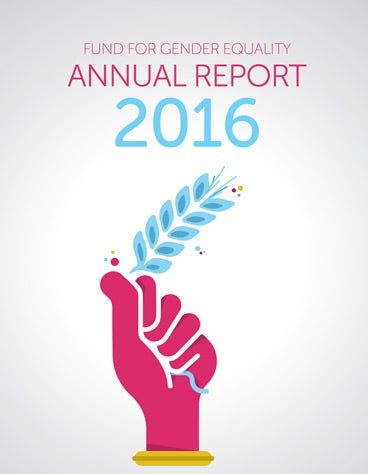
Fund for Gender Equality (FGE)’s 2016 Annual Report

With less than 13 years to achieve the high ambitions of the 2030 Agenda for Sustainable Development, we must move quickly, coming together to realize a more peaceful, prosperous, equal and sustainable world. By 2030, the effects could be transformative, particularly for women and girls. This will depend, above all, on realizing our responsibility to reach the most marginalized communities and address the multiple layers of discrimination and inequality they face.
They must not fall through the cracks this time. Ensuring that disadvantaged women and girls are not left behind depends fundamentally on translating commitments into concrete, context-driven action, at national and local levels, that tackle the multiple structural causes and manifestations of inequality and marginalization.
In 2016, 74 per cent of the FGE’s portfolio encompassed 25 programmes from the third grant-making cycle. They were selected through the 2015 Call for Proposals. In the first months of implementation, the newest grantees started to develop partnerships with key stakeholders essential for impact and the durability of results. Most of them compiled baseline data as the backbone of sound results monitoring and impact measurement, and developed training content. Despite a necessary learning curve related to results-based management and reporting procedures, grantees achieved some noteworthy results. This report captures some of them, with a view to providing the first snapshot of the FGE’s contributions to localizing the SDGs.
Nine programmes from the previous cycle were still active, yet reaching the final stages of implementation and reporting. Three of them—led by Promundo in Brazil, Sula Batsú in Costa Rica and Fund Sukhumi in Georgia—completed final evaluations, offering additional insights about impacts and lessons learned. By the end of the year, all programmes except one were completed. The FGE achieved 99 per cent programme closure for its first and second grant-making cycles.